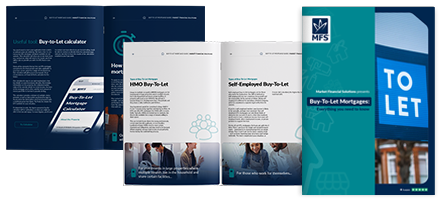Disclaimer
Market Financial Solutions are a bridging loan and buy-to-let mortgage provider, not financial advisors. Therefore, Investors are encouraged to seek professional advice. The information in this content is correct at time of writing.

If you want to move into the property market, you’ll likely want to build a portfolio. You may want to expand your holding, but exactly what is a property portfolio? Also, how can you finance a property portfolio expansion plan?
While you may have a definition in your mind, there are many facets to a property portfolio. Keeping multiple properties afloat, let alone profitable, is easier said than done. But, by focusing on a few essentials, you can give yourself the best chance of success.
In this guide, we’ll answer the key questions you want answered. We’ll also provide you with some tips on how to build a property portfolio and maintain it.
What is a property portfolio?
Let’s define the topic at hand before addressing the details. Broadly, a property portfolio is the term used to describe a collection of investments in owned properties. This can incorporate a range of assets, including student lets, holiday homes, HMOs, commercial spaces, and run-of-the-mill residential properties.
Traditionally, property portfolios are associated with landlords, who own multiple buy-to-let assets. The Prudential Regulation Authority – the body responsible for the supervision of banks and other large industries – defines a portfolio landlord as a someone who has 4 or more mortgaged buy-to-let properties across all lenders in aggregate.
But, you may think of yourself as a property portfolio owner even if you have few buy-to-let homes in your collection. Also, investment in property can be factored into a wider portfolio of assets. You may own properties along with equities, bonds, precious metals and more.
Source: Taylor James
Why build a property portfolio?
It’s relatively easy to understand what a property portfolio is, but why should you build one? In a word: Diversification. The more properties you own, the better your chances of locking in growth. It’ll also provide you with insurance when things go wrong. If a tenant pulls out, or a local market crashes, you’ll have back up assets to weather the storm.
Diversification will also allow you to take advantage of different markets. Often, differing markets provide varying selling points. In London for instance, you may take advantage of high demand and even higher prices. Whereas rural areas may give you with better yields, along with spikes in seasonal holiday periods.
A portfolio of properties may also support you if the worst were to happen. Say you unexpectedly lose your job. Or you fall ill. Your portfolio could provide you with income, or allow you to sell off assets in a pinch. This’ll keep you above water until you’re back on your feet.
Investing in a property portfolio may also cut down your overall tax costs. There are several tax benefits offered to property investors. You may claim deductions for interest on your mortgage, repairs, maintenance and more.
Source: Business Advice
How long does it take to build a property portfolio?
How you will build a property portfolio will be highly dependent on your individual circumstances. If you’re planning to buy entirely in cash, and manage to find properties with no chains, you could see everything completed in mere days. But, if you’re working with a high-street bank with a backlog of cases, and you’re trying to purchase several homes in chains, you’ll be looking at months.
Zoopla says from start to finish, the house buying process could take anywhere between 12 weeks to 6 months. Meanwhile, according to Rightmove, it now takes on average 149 days from the point an offer is accepted to legal completion — a rise of 26% from the 119 days it took in 2019.
What is a property portfolio’s advantages?
On top of providing diversification, building a property portfolio could prove to be lucrative. Property, as a market, has proven to be resilient through all manner of economic conditions. Since the start of the century, the average UK property price rose from £84,620 to £287,924. In the year to July 2022, average prices jumped by 15.5%. This was the biggest hike seen since May 2003.
Aside from capital growth, the income that could be generated from a property portfolio may also be substantial. In the second quarter of 2024, landlords generated an average rental yield of 6.3%, according to Paragon Bank, a 10-year high.
While yields have faced pressure from inflation, rents in general are on the up. The average rent for new lets in the UK was £1,226 in June 2024 according to Zoopla, a 6.6% rise on the prior year. As to be expected, rents are also substantially higher in London and the Southeast. In recent years – in the face of rate hikes, energy crises, and supply-chain issues – private rental prices rose consistently.
Source: Land Registry, Property Investor Today, Zoopla

Will I face challenges in how I’ll build a property portfolio?
The property market was hit by the same economic problems we all faced in recent years. Rising costs put the industry under pressure. Meanwhile, challenges on the high street made it hard for borrowers to attain finance.
But, fortunes have turned in more recent months. Housing market demand has jumped following the Bank of England’s recent base rate cut, which in turn has led to a mortgage rate war among the mainstream lenders. Property prices, in the immediate term, have also dropped, meaning now may be an opportune time to bag a bargain.
Still, while lower property prices may be good news for first time buyers, they’d be lucky to find a decent deal on the high street right now. The average shelf-life of a mortgage has dropped to 17 days according to Moneyfacts, showing banks may still not have full confidence in the current market.
Despite these problems though, you should try and remember they’re short-term in nature. Property investment is typically a long-term game. While economic problems regularly emerge, property demand rarely wanes. For decades, we’ve faced multiple recessions, crashes, wars and even a global pandemic. Yet, throughout all of this, property prices consistently rose.
Building a property portfolio may be a wise move for safeguarding your financial future. But before you get started, you’ll want to make sure you’re prepared.
Source: Sky News, The Telegraph, i news, Introducer Today
How to build a property portfolio – 13 crucial tips
1. Identify your goals
You’ll want to understand why you’re investing in property. At the very least, you’ll want to have an idea of what your end-goals are when building a property portfolio. Are you targeting properties for capital growth or their rental income potential? Do you even want to target the residential market? Perhaps you’re more drawn to commercial spaces.
You’ll want to address these concerns before you get the ball rolling. Knowing what you want to do will prevent you from getting distracted, or veering off track. Deciding you want to target student renters – after purchasing a manufacturing plant – may leave you in a pickle.
Think about how you want to enter the market, who your end customer is, and what your exit strategy will involve.
2. Do your research and set a budget
This should naturally follow after you’ve identified your goals. Once you know your target market, you’ll be able to dig into their details. If you’re expanding a portfolio to sell-on property for a profit, look at the average prices in your chosen area.
If you’re a landlord, calculate rental yields. Doing some maths ahead of time should prevent you from overpaying and diminishing your returns.
3. Don’t try to run before you can crawl
Don’t underestimate the importance of getting the essentials down. There’s little point in moving onto a new investment opportunity if your first one is struggling to stay afloat. Make sure your initial assets are secured before you rush out to expand.
Are your tenants locked in for a healthy timeframe? Is the paperwork all signed off? Are your properties ready for new environmental rules? If you leave these kinds of questions unanswered before you move onto your next project, you’ll likely be playing catchup for a while.
4. Seek out the right tenants
Chances are, if you’re asking yourself how to build a property portfolio, you’ll likely going to do so as a landlord. If that’s the case, you’ll want to attract the best tenants possible. They’ll be the key element in determining your success.
Where possible, you’ll want to seek out long leases and agreements. The longer tenants stay, the longer your income will be guaranteed. It’ll also be worthwhile examining the wider market.
Find out where there’s demand. Student towns will likely provide an ongoing supply of tenants. Suburbs on the edge of cities may be good for targeting commuters. Knowing what tenants want ahead of time could pay dividends.
5. Be a good landlord
On the flipside of this coin is what you’ll bring to the table. The relationship between tenant and landlord works both ways. You’ll want to do everything you can to keep your renters happy. One of the worst things you could do is build up a reputation for being a bad landlord.
Bad news travels fast. Renters will want to avoid difficult landlords where they can. Don’t forget about this relationship after the initial agreements are all finalised. Sort out unexpected repairs asap. Check in with your tenants often to make sure they’re content. Where tenants feel like they’re being taken care of, they may be more likely to stick around for longer. They may also be willing to pay a bit more in rent when their tenancy agreements need renewing.
6. Focus on the long term
This can be tricky, especially if you keep up with the news. Daily, we’re bombarded with negativity from the press. No matter what we collectively do, it seems we’re always facing some sort of crisis.
But, try to remember – this alarmism is by design. We’re prone to negativity bias. We’re more likely to pay attention to bad news over anything else. It’s a survival instinct. Our news organisations know this. They know you’re more likely to click on a link if it says “everything’s bad” as opposed to “we’re all good in the UK, carry on”.
While it’s important to keep up with what’s going on the world, please remember what you’re reading may be skewed. Times are tough, but they’ve been tougher in the past, and we managed to push through them. There are always short-term hurdles to overcome. But over the long term, those issues will likely seem insignificant.
7. Prepare for the future
While the future may be brighter than expected, you should still remember that unforeseen issues could emerge. New taxes may be on the horizon. Legislation could change, or a completely unexpected crash could take everyone by surprise.
Some changes you’ll be able to prepare for. Others you won’t. The best you can do is minimise damage where possible. Getting in contractors to upgrade a home early before green laws come into play could prevent a last-minute rush. Setting aside a “rainy day” fund may provide peace of mind for any costly surprises.
8. Look into setting up as a company
If you’re planning to build a property portfolio of significant size, it may be worth doing so through a limited company. Landlords investing via a company setup may benefit from lower tax rates, perks for their mortgage interest costs, and even inheritance advantages.
This can get complicated however so to best take advantage, you’ll want to take advice from accountants and other professionals.
9. Keep an eye out for diamonds in the rough
Opportunities could be found on property sites and through estate agents. But by looking outside the obvious sources, you could find opportunities that have fallen under the radar.
Auction houses regularly feature undervalued properties in need of some refurbishment. If you’re willing to do the work, these kinds of investments may provide a lot of upside potential.
10. Expand your network
Golden opportunities could also be found through networking. There are a lot of players in the property market. On top of estate agents and lenders, there are numerous brokers, surveyors, and architects out there.
The more effort you put into getting to know these professionals, the more likely you’ll stumble across an opportunity. Knowledge is power after all. It may be worth attending a few industry events, registering with some governing bodies, and sending out a social media friend request or two.
11. Add value
There is a lack of supply in the property market. But that doesn’t mean you can just rest on your laurels once you’ve invested in a home. Buyers and tenants may be desperate for more options, but that doesn’t mean they won’t have standards.
To keep your properties desirable, you’ll want to upgrade and refurbish them where possible or needed. Expanding a kitchen, or putting in modern fittings could serve you well. You’re likely to see less interest if your properties appear dated. And while refurbishments could be expensive, there may be an opportunity to recoup the costs through increased rents and prices.
12. Think about how much time you’re able to dedicate
Another important point to consider when you build a property portfolio: Added together, all the aforementioned elements require a lot of time and resources. At a certain point, you’ll want to take a step back and think about what you can commit to.
If you find yourself stretched, it may be worth seeking help. Agents and consultants could ease the burden. While this may present an additional cost, it may be worth it if it means everything is being handled correctly. You’ll need to weigh up your budget against your time restraints.
13. Remember – it’s a business
No matter who you’re dealing with, you should remain courteous and professional. Regardless of whether you’re working with a bank, a tenant, or a solicitor. But, you shouldn’t lose sight of the fact that you’re essentially operating a business. If emotions get heightened, it runs the risk of hitting your bottom line.
If you get too attached to your tenants, you may find yourself a few months behind on rent if they take advantage. As may be the case with buyers. If you’ve bonded with a buyer, you may be willing to be especially patient as they drag their feet on making an offer. In the meantime, you could turn a blind eye to a buyer you don’t know who is ready to move asap.
Property portfolio investors provide a valuable service for the market. And for the most part, the private rental market works. But you should remember these are transactional arrangements. If you end up bankrupt due to missing payments, it helps no one.
How to finance a property portfolio
In the current market, you may find it difficult to find support through the regular channels. Mainstream lenders may be nervous with so much uncertainty looming. Any complications in your history will likely throw up red flags on the high street.
Going forward, specialist lenders like Market Financial Solutions will have a bigger role to play in financing property investments. We take into consideration a range of circumstances and can adapt to a difficult economy. We’re also open to new investors newly attracted the industry, such as foreign buyers.
Our products are designed to be flexible, and we offer several different kinds of loans. From auction finance through to buy-to-let mortgages, we’re here to help your property portfolio plans.
The Complete Guide to
Buy-to-Let Mortgages
Everything you need to know
- Fundamentals
- Different mortgage types
- Useful tools
- Industry stats & more





